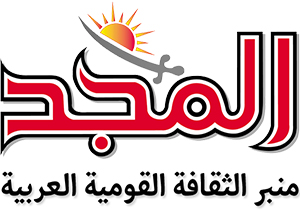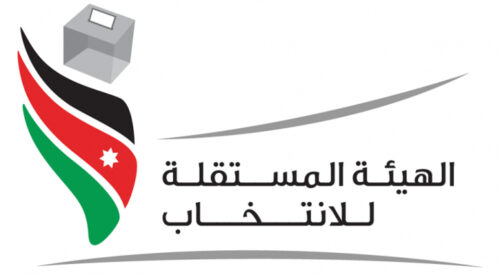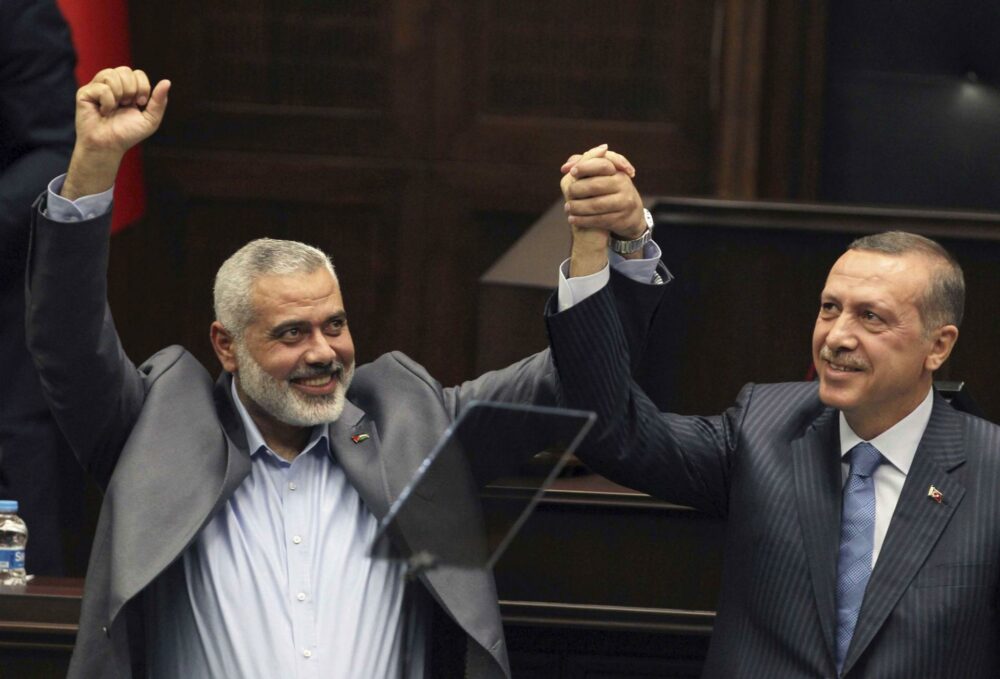أسابيع حاسمة لمراهنات واشنطن على استنزاف روسيا في أوكرانيا


د. منذر سليمان وجعفر الجعفري/ واشنطن
يعكف الإعلام الأميركي، في مجمله، على تسويق السردية الأميركية الر سمية، التصعيدية والبالغة العداء لروسيا، ويفشل في وضع الصراع في أوكرانيا في إطاره التاريخي الصحيح، وهل كان من الممكن تلافي الصدام المسلح “لو أخذت واشنطن وحلف الناتو مخاوف روسيا الأمنية على مجمل الجد”، بل يجهد المراقب في التوصل إلى إقرار النخب السياسية والفكرية، وحتى العسكرية، بحقائق تاريخية جوهرها سلسلة غزوات شنّها الغرب في اتجاه حدود روسيا الغربية، نابليون فرنسا وهتلر ألمانيا وحلف الناتو، منذ نهاية الحرب الباردة.
بل تجاهلت تلك النخب وصنّاع القرار السياسي نصائح أحد أبرز العقول الاستراتيجية الأميركية في ذروة الحرب الباردة، زبغنيو بريجينسكي، الذي حذّر الإمبراطورية الأميركية، قبل نحو عام من وفاته، من أنها “لم تعد القوة الإمبريالية المهيمنة على العالم، وعصر (الهيمنة) بدأت نهايته”. وتنبأ قبل ذلك بنحو 3 عقود، في عام 1994، بنشوب حرب مدمّرة في أوكرانيا (مقال بعنوان “نحو إعادة تصويب التحالفات العالمية”، في مجلة “ذي أميركان ناشيونال إنترست”، 17 نيسان/إبريل 2016).
وأوضح بريجينسكي، بشأن أوكرانيا، أن “واشنطن وحلفاءها ليسوا ملزَمين بالدفاع عنها، باستثناء فرض عقوبات (على روسيا) وإمداد كييف ببعض المعدات العسكرية”، محذراً مجدداً من ميل واشنطن وحلف الناتو إلى “إذلال روسيا” بعد نهاية الحرب الباردة. أوكرانيا، بحسب بريجينسكي، اضحت “فضاءً جديداً ومهماً في رقعة الشطرنج الأوراسية” (كتاب بريجينسكي “رقعة الشطرنج الكبرى”، 1997).
استاذ العلاقات الدولية المرموق في جامعة هارفارد، ستيفن وولت، أشار مؤخّراً إلى إمكان تفادي الأزمة الراهنة في أوكرانيا “شريطة عدم استسلام الولايات المتحدة وحلفائها الأوروبيين لغطرستهم، وعقد آمال غير واقعية، والتشبث بمثالية النهج الليبرالي، والتزام الرؤى الواقعية عوضاً عن ذلك”.
“الغطرسة” الغربية أدخلت العالم برمته في أزمات اقتصادية وغذائية ومصادر الطاقة، لا تزال تداعياتها تنخر رفاهية شعوب العالم دون أفق لأي حل مرئي في الوقت المنظور، “حفاظاً” على سردية “هزيمة روسيا في أوكرانيا”، وخسارتها عدداً كبيراً من الجنرالات العسكريين نتيجة “اخطاء لوجستية وسوء تقدير لطبيعة مقاومة الأوكرانيين”، كما يتردد باستمرار على مسمع ومرأى من المشاهد الغربي، والأميركي تحديداً. روسيا، في المقابل، اعترفت بمقتل ضابط بجهاز الاستخبارات العسكرية، اليكسي غلوشاك، في معركة ماريوبول الأولى، 14 آذار/مارس 2022.
تداعت السردية الأميركية والغربية سريعاً في أعقاب تصريح صادم لرئيس الوزراء البريطاني، بوريس جونسون، في ختام زيارته الرسمية للهند، قائلا: “المحزن هو أن احتمال فوز (الرئيس الروسي فلاديمير) بوتين في هذه الحرب بات أمراً واقعاً بالطبع”. وأضاف ” أخشى أن الوضع لا يمكن التنبؤ به في هذه المرحلة. علينا فقط أن نكون واقعيين بشأن ذلك”. (شبكة “سي أن أن” باللغة العربية، 22 نيسان/إبريل 2022).
الثابت المتغيّر في مسير الحرب في أوكرانيا هو معركة السيطرة على ماريوبول الحيوية، ومجمّع أزوف ستال لصناعة الحديد والصلب، والذي يمتد على مساحة نحو 12 كلم مربعاً، ويطل على بحر آزوف، تحاصره القوات الروسية بشدة من كل الاتجاهات من دون اقتحامه “بحيث لا يُترك منفذاً لذبابة للنفاذ منه”، بحسب قرار الرئيس بوتين لقياداته العسكرية. وسائل الإعلام الغربية تصف المجمع بأنه “آخر جيب للمقاتلين الأوكرانيين”، الذي يضم شبكة هائلة من الأنفاق تحت الأرض شُيدّت منذ زمن الاتحاد السوفياتي.
يشار إلى أن نحو 80% من سكان ماريوبول أيّدوا الانضمام إلى روسيا في استفتاء جرى في عام 2014، وأضحت المدينة جزءاً من جمهورية دونيتسك المعلنة من طرف واحد، قبل ان تُعيدها كييف إلى سيطرتها في شهر حزيران/يونيو 2014، نتيجة عمليات مشتركة بين القوات الأوكرانية وعناصر كتيبة آزوف، وباتت على خط تماس النزاع المسلح في دونباس منذئذ.
ماذا بعد ماريوبول؟ ثمة إجماع غربي على أن حسم المعركة النهائية سيتم قبل حلول يوم 9 أيار/مايو المقبل، ذكرى انتصار الاتحاد السوفياتي على النازية في الحرب العالمية الثانية، وإعلان الانتصار على “كتيبة آزوف” من المتطرفين اليمينيين والنازيين الجدد.
بيد أن آفاق المعركة المقبلة، من مجمل وجهات النظر الروسية والغربية، ستشهد “المرحلة الثانية” عبر تحرير كل مناطق إقليم الدونباس، وفتح طريق برّي يصل روسيا بشبه جزيرة القرم، والانتقال إلى “المرحلة الثالثة”، المتمثّلة بإنجاز الأهداف السياسية من “العملية الخاصة” الروسية، وعنوانها “اجتثاث النازيين الجدد من الجيش والسلطة الأوكرانيين، وضمان حياد أوكرانيا، وعدم انضمامها إلى حلف الناتو”. البعض يشير إلى توجه مقبل للقوات الروسية إلى بسط سيطرتها على مدينة أوديسا، آخر ميناء بحري أوكراني على بحر آزوف.
القيادات العسكرية الأميركية، ممثّلة بتصريحات الناطق الرسمي للبنتاغون جون كيربي، تحدثت عن “معارك جس نبض” لروسيا في دونباس، لكنها لا تزال تراوح من دون تحقيق أي إنجاز ملموس، إذ تعاني نقصاً شديداً في قوات المشاة المتمرسّة وامتلاك تكتيكات ميدانية لدعم الوحدات المدرّعة. في المقابل، يدرك حلف الناتو أن بوادر الانتصار تكمن في ضمان توريدها الثابت لذخائر ومعدات مضادة للدروع وصواريخ مضادة للطيران، وتدفق تمويل ثابت بمئات ملايين الدولارات من معدات الترسانات الأميركية والغربية.
ويمضي القادة الأميركيون في الإشارة إلى معارك في الجبهة الشمالية، المحاذية للحدود الروسية، في محيط مدينة خاركوف، والمتمثّلة بعقدة كماشة خطوط الإمداد الخلفية في مدينة إيزيوم، نظراً إلى طول الطريق المؤدية من مدينة بيلغوغراد الروسية إلى إيزيوم، والتي تنتشر فيها قوات أوكرانية تنشط في تدمير الجسور والسكك الحديدية وشن هجمات على القرى الروسية المؤدية إليها.
وجزم تقرير عسكري أميركي بشحّ قوات المشاة وعربات الإمداد المتوافرة لدى القوات الروسية في أوكرانيا “كضمانة للفوز في حرب في 3 جبهات في جنوبي أوكرانيا وشرقيها وشماليها، لكنها حصرت قتالها الآن في جبهتي الجنوب والشرق، الأمر الذي يدل على نقص حاد في تلك الموارد أكثر من ذي قبل” (أسبوعية “فوربز”، 23 نيسان/إبريل 2022).
يستند أولئك إلى انطلاقهم من تقييم اعتماد تشكيلة “مجموعة الكتائب التكتيكية” الروسية على الجانب اللوجستي، على نحو كبير، وخصوصاً بسبب حاجتها إلى كميات كبيرة من الوقود والذخيرة وقطع الغيار والأطعمة، والتي نشأت عام 2008 لتخلف هيكلية الفرق التقليدية، على الرغم من أن أداء المجموعة “يتفوق على نظيره فريق الكتائب الهجومية الأميركي”، الذي أضحى الحجر الأساس في العقيدة الأميركية لتنفيذ المناورات العسكرية، وقوامها قوات المشاة والاقتحام والتدريع، بعد التعديلات التي طرأت على تركيبة قواتها العسكرية عقب حروبها الخاسرة في العراق وأفغانستان.
مآلات الحرب الدائرة، وفق تقديرات النخب السياسية والفكرية الأميركية، تتخبط بين النزعات الرغبوية إلى إطالة أمد الحرب، وبين الحقائق الواقعية بشأن رؤية اتفاق سياسي في نهاية المطاف، وهنا تتداخل، مرة أخرى، الفرضيات الجيوسياسية بشأن أفول الهيمنة الأميركية، كما حددها بريجينسكي وآخرون، وتعدد القطبية العالمية.
نسترشد بجملة مقالات تحليلية لفصلية “فورين أفيرز”، ومقالاتها الاسبوعية بهذا الشأن، للإطلالة على إرهاصات النخب الفكرية ومخاوفها من مستقبل “سيواجه الغرب فيه أعواماً من عدم الاستقرار في أوروبا، والتسبب بموجات من المجاعات والاضطراب الاقتصادي”. كما أن هجوماً طويل الأجل على أوكرانيا سيعرّضها لـ”خطر تآكل الدعم الغربي لكييف وتقلّب تأييد الرأي العام لديها، بينما يستطيع (الرئيس) بوتين حشد شعبه فترةً أطول من الزعماء الغربيين” (سلسلة مقالات آخرها بعنوان “ماذا لو لم نشهد نهاية للحرب في أوكرانيا”، مجلة “فورين أفيرز”، 20 نيسان/إبريل 2022).
من بين المزاعم الدائمة الترداد في سردية النخب الأميركية: “اوكرانيا كانت رسمياً دولة غير منحازة، والهجوم الروسي يدفعها أكثر إلى الغرب، ومن المحتمل انضمام فنلندا والسويد إلى حلف الناتو” صيف العام الحالي. لدى أوكرانيا “عدد من الأسباب في عدم إنهاء الحرب قبل الأوان، وفقاً للشروط الروسية. لقد كان أداء جيشها جيداً”.
في جانب المراهنات الأميركية: التعويل على أن تؤدي “العقوبات ضد روسيا، لا سيما في قطاع الطاقة، إلى تغيير في الحسابات الروسية مع مرور الوقت”. وقد يلجأ الرئيس بوتين إلى “حرب استنزاف وتأجيل هزيمته، وربما تسليم الصراع المحكوم عليه بالفشل إلى من يخلفه، وهو ما ستتيح لموسكو تجنيد مئات الآلاف من الجنود الجدد وتدريبهم، وإعادة بناء قواتها المستنزَفة”.
ايضاً، المراهنة على انتظار الرئيس بوتين “فوز ترامب في الانتخابات المقبلة، الأمر الذي يُعينه على ممارسة الضغط على حلف الناتو، ومحاولة إبرام صفقة مع روسيا على حساب الحلف، وكذلك مراهنته على تحولات سياسية في أوروبا،” خصوصاً في فرنسا عقب إعلان فوز مانويل ماكرون في الانتخابات الرئاسية.
روسيا وأوكرانيا “قد لا تحققان أهدافهما من الحرب”، فقد لا تتمكن أوكرانيا من طرد القوات الروسية بالكامل من الأراضي التي احتلتها، وقد تفشل روسيا في تحقيق هدفها السياسي الرئيس، وهو السيطرة على أوكرانيا. “تسعى كييف لوقف إطلاق للنار بشروط أفضل، من خلال إحراز مزيد من التقدم في ساحة المعركة، وصدّ الهجوم الروسي في شرقي أوكرانيا”. إن “أي اتفاق سلام مستقبلي، لا يضمن تنازلات كبيرة من أوكرانيا، سيكون غير متلائم مع الخسائر في الأرواح والعتاد والعزلة الدولية لروسيا”.
أما رؤية النخب السياسية، على الشاطئ المقابل من المحيط الأطلسي، فتباينت بصورة ملموسة مع “المراهنات والتوقعات” لنظيراتها الأميركية، كما أوجزها رئيس الوزراء البريطاني، العدو اللدود لروسيا، بقوله إن فوز الرئيس بوتين بات أمراً واقعاً. واستطردت النخب المعنية بأنه ينبغي للغرب الإعداد للمرحلة المقبلة، كما تنبّأ بها الرئيس الروسي، بنهاية الأحادية القطبية وتراجع هيمنة الولايات المتحدة على مقدرات العالم، بل نهاية تحكّم الدولار في الاقتصادات الوطنية.
How US Military Analysts Assess Russia’s Latest Offensive
On Thursday, Russian President Putin declared that the Ukrainian city of Mariupol had been “liberated,” even though about 1,000 Ukrainian troops continued to resist the Russians and still held the Azovstal steelworks. The Russians intend to hold a Victory Day parade in Mariupol to celebrate the victory over Nazi Germany in 1945 and the liberation of Mariupol.
In addition to declaring the battle of Mariupol over, Putin also ordered troops to seal off the Azovstal steel works so tightly that even “a fly cannot pass through.”
So much for moving the troops from Mariupol to the front. Historically sieges are hard to maintain, and they require more soldiers than the defense. Since the steel plant is bordered by the Kalmius river and the Sea of Azov, it shouldn’t be hard for soldiers and civilians to escape from the plant if they wish to.
Of course, from Putin’s point of view, his forces control the roads in the Mariupol area, so he does have the coveted land bridge from Russia to Crimea.
There are reports coming out about a partisan resistance between the Crimea and Mariupol. Information is scant about this force, but it reportedly operates in an area larger than Mariupol and is closer to Ukrainian lines so supplies can reach them.
Russian commanders may have another front to worry about after refitting their Mariupol units.
Meanwhile, the battle for control of the Donbas continues. The US Army has told reporters in press briefings that the Russians have made probing attacks but have not made any major breakthroughs.
The Russian strategy appears to be to cut off the eastern part of Ukraine by driving north from Donetsk, which is north of Mariupol, and south from Izyum. If successful they will capture an important coal mining region. If the Ukraine army continues to fight along the current battlefront, they will be surrounded.
Of course, if the Ukrainians retreat from Donetsk, they will be surrendering a large part of the country.
According to US analysts one major problem for the Russians is that the jumping off point for the northern part of the Russian pincher is Izyum. Russian supplies run on a road that goes from Belgorod, Russia, skirts the Ukrainian held city of Kharkov, and ends up at Izyum.
This road has become a target for Ukrainian attention, including destroying Russian rail bridges and attacks on Russian villages near the border.
As we have noted in the past, modern conventional warfare requires a continuous supply of parts, fuel, food, and other things necessary for modern warfare. It doesn’t help that the modern Russian Battalion Tactical Group (BTG) is very reliant on logistics, even though it is considered superior to the American Brigade Combat Team.
Ironically, the Russian BTG was created by the Russian Army to move away from the Cold War military structures of divisions and armies.
After the Cold War, NATO’s interventions in the Balkan nations, Iraq, and Afghanistan caused their armies to evolve into smaller, more mobile units for fighting insurgencies. In the case of the US, they developed the Brigade Combat Team, which became the basic unit of maneuver for the US Army. There are three types of teams: infantry, Stryker, and armored. They are light enough to be deployed anywhere in the world by air transport and operate on their own. They were ideal for insurgencies like those in Iraq, Afghanistan, and Syria.
In 2008, Russia moved away from its conventional organization of divisions and transitioned into the BTG. These units were lighter, easier to deploy around the world, and self-contained – including everything from tanks to mobile air defense. They were considered superior to the American Brigade Combat Tea, (BCT). They proved their worth in Syria.
Ironically, their problem was manpower. Relatively untrained conscripts were 25% – 50% of the Russian BTG manpower. They were usually kept in non-combat roles like maintenance and logistics.
However, thanks to the large number of heavy weapons attached to the BTG, much of the professional soldier strength was dedicated to operating and protecting the weapons systems.
After subtracting the conscripts and the professional soldiers attached to their heavy weapons that left about 400 to 500 infantries. After further subtraction of patrol and security, about only 250 soldiers were available for infantry assault tasks. Given the 3 to 1 ratio of an attacker to defender, that means that a company of about 80 soldiers could possibly hold off a BCT infantry attack.
Another weakness of the Russian infantry is their reliance on fighting inside an armored infantry vehicle. Unlike their American counterparts, they are not trained in dismounting and carrying out aggressive infantry attacks.
In nations like Syria, the Russians were able to supplement their lack of infantry by using Syrian infantry units. That’s one reason why the Russians are trying to sign Syrians and others from the Middle East.
The BTG also suffers from the fact that it is designed for insurgencies in remote areas. It isn’t designed for a large conventional war in Europe, which it is required to fight today in Ukraine. Large conventional wars require staff of officers to handle the complex problems of conventional warfare.
Although staff have been considered an unnecessary bureaucracy in the military, in warfare on a grand scale, they can solve problems of transportation, logistics, and supplies. This leaves the generals to develop strategy and the junior and field grade officers to direct the fighting.
Without the staff, the senior officers must frequently visit the front to handle what staff officers once did. This is one possible reason that the Russians have suffered so many losses in their flag officer ranks.
Although the Russian BGTs are capable, they have been designed to fight in places like Syria, instead of Ukraine – especially Ukraine with some of the most modern weapons available. They also need large amounts of supplies like fuel, ammunition, repair parts, and food. Without the constant stream of supplies, the BGTs are limited in what they can do. Traditional Russian military doctrine of massive artillery bombardments before pushing through enemy lines seems quite difficult.
At this point, the battle of Donbas is in the balance. Russia’s BGTs lack enough trained manpower. Their units require a secure logistics system. They lack the aggressive infantry manpower and tactics that are necessary to support their armored units. And, if they do advance, there is no guarantee that their supplies will keep up with them.
Pentagon officials like to highlight what they claimed to be a weakness of the Russian Navy, which has lost a cruiser – the biggest Russian navy loss since World War Two.
NATO nations are aware that the key to victory is keeping up the supply of ammunition and man portable anti-tank and anti-aircraft missiles. To keep Ukraine in the field will mean hundreds of millions of dollars per week of munitions.
It also appears that NATO is willing to step up its contributions. The US military has admitted that modern military aircraft have been shipped to Ukraine, along with tanks and armored vehicles. NATO nations have also ordered their civilian weapons providers to gear up to wartime status.
This leaves Russia in a tight position. Critical parts for their weapons systems are produced in the West and are now unavailable. And, although they have a war industry to supply consumables like ammunition, they can’t hope to keep up with NATO’s resupply of Ukraine. They can try to stop supply convoys from reaching eastern Ukraine, but that will require using its overstretched air force and rapidly disappearing smart munitions. They can’t use the guerilla tactics the Ukrainians used to attack the Russian convoys in the north of Ukraine.
Again, US and NATO are aiming for a long war of attrition, where Ukraine will continue to resist thanks to the logistics support of NATO.
Detect languageAfrikaansAlbanianArabicArmenianAzerbaijaniBasqueBelarusianBengaliBosnianBulgarianCatalanCebuanoChichewaChinese (Simplified)Chinese (Traditional)CroatianCzechDanishDutchEnglishEsperantoEstonianFilipinoFinnishFrenchGalicianGeorgianGermanGreekGujaratiHaitian CreoleHausaHebrewHindiHmongHungarianIcelandicIgboIndonesianIrishItalianJapaneseJavaneseKannadaKazakhKhmerKoreanLaoLatinLatvianLithuanianMacedonianMalagasyMalayMalayalamMalteseMaoriMarathiMongolianMyanmar (Burmese)NepaliNorwegianPersianPolishPortuguesePunjabiRomanianRussianSerbianSesothoSinhalaSlovakSlovenianSomaliSpanishSundaneseSwahiliSwedishTajikTamilTeluguThaiTurkishUkrainianUrduUzbekVietnameseWelshYiddishYorubaZulu AfrikaansAlbanianArabicArmenianAzerbaijaniBasqueBelarusianBengaliBosnianBulgarianCatalanCebuanoChichewaChinese (Simplified)Chinese (Traditional)CroatianCzechDanishDutchEnglishEsperantoEstonianFilipinoFinnishFrenchGalicianGeorgianGermanGreekGujaratiHaitian CreoleHausaHebrewHindiHmongHungarianIcelandicIgboIndonesianIrishItalianJapaneseJavaneseKannadaKazakhKhmerKoreanLaoLatinLatvianLithuanianMacedonianMalagasyMalayMalayalamMalteseMaoriMarathiMongolianMyanmar (Burmese)NepaliNorwegianPersianPolishPortuguesePunjabiRomanianRussianSerbianSesothoSinhalaSlovakSlovenianSomaliSpanishSundaneseSwahiliSwedishTajikTamilTeluguThaiTurkishUkrainianUrduUzbekVietnameseWelshYiddishYorubaZulu
Options : History : Feedback : Donate
Close




